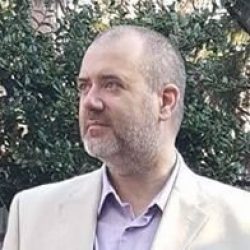Introduction
 Much of the discussion surrounding the development of open educational resources has revolved around the development of open content, whether in the public domain or released under a permissive license such as the Creative Commons Attribution-ShareAlike license.
Much of the discussion surrounding the development of open educational resources has revolved around the development of open content, whether in the public domain or released under a permissive license such as the Creative Commons Attribution-ShareAlike license.
An alternative approach, best suited for developing online courses, is the model of courses as “playlists”. This model builds an open educational resource by referring to materials that are available online. For example, a course could be built as a sequence of readings, video clips, and other materials that while proprietary and closed, still cost the student nothing to view online. These can then be combined with lecture notes and quizzes that are developed specifically to tie the disparate elements of the course together.
The purpose of this is to retain as much of the freedom of open educational resources as possible, while also taking advantage of the vast wealth of proprietary closed materials. The cost to the student remains zero, and the course itself can be released as an open educational resource, free for all to use, copy, and modify.
OpenCourseWare from MIT
One example of this model is the OpenCourseWare (OCW) project from the Massachusetts Institute of Technology. Widely praised as one of the premier initiatives developing open educational resources, the lion’s share of the project’s output consists of courses that are made up of a syllabus and related lecture notes. Typically, the syllabus will specify a commercial textbook that accompanies the course, and the student will gain most of his or her instruction from reading the textbook. The lecture notes, tests, and other course materials serve the secondary purposes of elaborating key points and evaluating the student’s retention of the material.
A typical OCW course is thus similar to the playlist model in that it refers to an external resource, in this case various chapters of a commercial textbook, which are used during the instruction phase of each unit of the course.
Playlists: The Next Step
While the MIT model is a step in the right direction, most of its courses still rely on expensive commercial textbooks to cover the bulk of the course’s material. To take the model to its logical conclusion, the course designer must start with the syllabus as an outline, and select from among various articles and other online resources so that for each lesson an appropriate resource is covering the material to be learnt.
For example, a course designer might begin by creating an outline of a course divided into weeklong units. After determining the educational objective for each unit, the course designer will draw on his or her own expertise as well as those of colleagues, subject matter experts, librarians, and the like to find the best online resource to cover that material.
In addition, a variety of different materials can be assigned for each unit, thereby accommodating students who have different learning styles. For some students, a series of online encyclopedia articles may be appropriate, whereas for others a set of video clips or a Flash-powered interactive demonstration may be better for teaching the same material. In an advanced implementation, a course designer can produce multiple paths through a set of different materials, and students can be tested on their learning styles in advance, and shepherded through a playlist of course materials that are best suited for them.
Updating Playlist Model Courses
The modular design of playlist model courses brings certain advantages when it comes to keeping courses up to date. By consisting largely of smaller learning objects from disparate sources, these courses can be easily modified in keeping with a variety of objectives.
First, and most obviously, when a course covers material that changes rapidly in the real world, such as those on Finance or Accounting, or those that cover recent history, it is easy to change out a reading or other linked component than it is to rewrite an entire course. Even if a course covers material that does not change, as new online resources become available, or as those who maintain courses simply find resources of which they had hitherto been unaware, the courses can be quickly updated.
This is especially advantageous for courses that are set up as OERs, but which by necessity link to closed and proprietary resources. As OER development projects release more and more material, references to those closed resources can be changed out for references to open resources, with the ultimate goal of there being enough open resources that it is no longer useful to link to closed ones.
Responding to Anticipated Objections
Some may say that a course will have more consistency and thus be easier for a student if it is based primarily on a single text written by an author or team of authors with a unified style. However, in practice, instructors often assign secondary texts to cover important units of material, and even within a primary text will skip around in a sequence unintended by the author.
Others might argue that most of the materials available to be used in the playlist model are not intended as course materials, and thus will be pedagogically inferior to texts that are designed specifically for that purpose. However, not only is there an increasing amount of material designed for the purpose, but the inclusion of lecture notes designed specifically for the course can smooth out any rough edges that such materials might have. Furthermore, practitioner literature is increasingly available online, such as through FindArticles.com, that is used for continuing education in many fields, and academic working papers are available from several sources, such as SSRN.com.
A major objection is that this model of course development is useful for courses meant for students with access to the Internet, but is not useful for those on the far side of the digital divide. While this is correct, the model at least is of value to some, and insofar as it promotes development of open resources to replace closed ones, it ultimately builds an environment that will help those who cannot yet use the Internet.
Conclusion
Course design on a playlist model provides many of the advantages of Open Educational Resources even when a great deal of useful educational material is closed and proprietary. Such playlists are easy to build and maintain and help students today even as they serve as a catalyst for the development of new materials that all can use freely tomorrow.


 I often read BBC Caribbean, and a few days ago I saw that they had a Have Your Say about the
I often read BBC Caribbean, and a few days ago I saw that they had a Have Your Say about the 